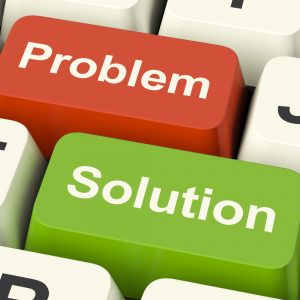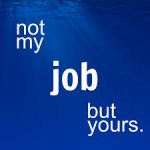 As an IP Strategist, I am fascinated by stories from which declining business fortunes can be traced directly to failed patent strategies. Often, the failures can be traced to patent attorney errors that limit the effectiveness of a company's patent to prevent competitive knock-offs, but, often, the problems can be traced to the lack of accountability for IP strategy within an organization. For those companies where IP is a primary driver of competitive advantage, the absence of someone who "owns" the job of making sure IP is properly captured and protected can result in unrecoverable errors that opens the innovator to unwelcome competition. In this regard, the recent loss of patent protection to a popular drug product should serve as a useful case study on why the C-suites of innovative companies should consider strategic in-house IP counseling to be a
As an IP Strategist, I am fascinated by stories from which declining business fortunes can be traced directly to failed patent strategies. Often, the failures can be traced to patent attorney errors that limit the effectiveness of a company's patent to prevent competitive knock-offs, but, often, the problems can be traced to the lack of accountability for IP strategy within an organization. For those companies where IP is a primary driver of competitive advantage, the absence of someone who "owns" the job of making sure IP is properly captured and protected can result in unrecoverable errors that opens the innovator to unwelcome competition. In this regard, the recent loss of patent protection to a popular drug product should serve as a useful case study on why the C-suites of innovative companies should consider strategic in-house IP counseling to be a
Lack of Focus on IP Strategy Destroys $100 Millions in Value
Failure to Generate REAL Patent Protection: Keurig’s Story (Part 1)
Innovators--be they individuals or corporations--frequently view patent protection as the key to capturing value from the time and money invested in creating a successful product. Indeed, conventional wisdom dictates that a patent covering a true innovation will make it difficult, if not virtually impossible, for a competitor to legally provide a knock-off product to the same customer. Time and again, however, a successful product introduction will be followed by appearance in the market of a substitute product that provides the same consumer benefit but that also does not infringe the innovator's patent rights. In such a case, the innovator is not only faced with competition, it must now play in an increasingly price-eroded market, where such price erosion is likely more painful for the innovator because it made an investment that the knock-off company did not make. A familiar example of a product where the innovator's patents failed to protect a
The Medical Device Patent Strategy Problem-Case Study
An IP Strategist like myself spends considerable time "Monday Morning Quarterbacking" patent strategy for medical devices and other inventions for the purposes of valuation, commercialization and otherwise. In this regard, I am frequently asked to review medical device patents to provide my opinion regarding claim coverage in relation to commercialization potential. Most of these reviews indicate that the medical device patent fails to create a scope of protection sufficient to justify the investment needed to fully realize the value of a new market opportunity.

Alternatively, I will provide a "freedom to operate" opinion to a competitor that wishes to enter the market with a non-infringing alternative but which nonetheless leverages the key insights that formed
Who Needs a Patent?
 My response to the question posed in the title of this post is typically: “the only person who needs a patent is a patent attorney.” Indeed, if a patent attorney fails to convince clients like you that they need to obtain a patent, she will quickly lose her livelihood. You should therefore be skeptical if a patent attorney recommends that you move forward with a patent without also advising you to first fully evaluate your business model, your go-to-market strategy and the competitive landscape and determining along with you how the available patent protection may allow you to realize your company's revenue and exit goals.
My response to the question posed in the title of this post is typically: “the only person who needs a patent is a patent attorney.” Indeed, if a patent attorney fails to convince clients like you that they need to obtain a patent, she will quickly lose her livelihood. You should therefore be skeptical if a patent attorney recommends that you move forward with a patent without also advising you to first fully evaluate your business model, your go-to-market strategy and the competitive landscape and determining along with you how the available patent protection may allow you to realize your company's revenue and exit goals.
This is not to say that patents are never the right thing or even often the right thing for entrepreneurs. To the contrary, examples abound for companies where patents served as a primary means of
Strategic Patenting: How To Get it Right (Guest Post)
 This article, by Francis Hagel, first appeared in Intellectual Property Magazine. It provides strong guidance, in checklist form, for those seeking to beat the odds that the patents they obtain will actually generate strategic value. Mr. Hagel is an IP strategy advisor from France. The article is reproduced with permission.
"Suggestions for strategic drafting of patent applications"
In the drafting of a patent application, a practitioner starts from a blank page[i]. He/she enjoys the greatest freedom for shaping its content on the basis of the information at hand concerning the invention, its context and the prior art of interest, within the constraints set forth by patent law in the country of filing, keeping in mind the specifics of patent law in the major markets for the invention. This freedom applies to all parts of the application : definition of the
This article, by Francis Hagel, first appeared in Intellectual Property Magazine. It provides strong guidance, in checklist form, for those seeking to beat the odds that the patents they obtain will actually generate strategic value. Mr. Hagel is an IP strategy advisor from France. The article is reproduced with permission.
"Suggestions for strategic drafting of patent applications"
In the drafting of a patent application, a practitioner starts from a blank page[i]. He/she enjoys the greatest freedom for shaping its content on the basis of the information at hand concerning the invention, its context and the prior art of interest, within the constraints set forth by patent law in the country of filing, keeping in mind the specifics of patent law in the major markets for the invention. This freedom applies to all parts of the application : definition of the
Strategic Patenting Part 3: Why (Almost) Every Innovator Fails to Maximize Patent Value
The Take Away: Those seeking to generate market-making patent coverage for new innovations must recognize that patent coverage should focus not on how the problem is solved but instead on the benefits provided to the customer. Most patent coverage is directed to a specific solution to a customer need that is characterized in the form of an invention. Patents that cover only one solution to a broad customer need will permit competitors to solve the same customer need with a non-infringing substitute product, thus leaving the patent holder with no legal recourse against their competitor. On the other hand, market-making patent coverage focuses on the benefits provided to the customer, which means that competitors cannot sell the same benefit. Accordingly, patent coverage that emphasizes benefits over features will make it more difficult for competitors to provide the same solution to the customer. Innovators must
Strategic Patenting Part 2: It’s Not Your Patent Attorney’s Job to Get it Right
 From the last post, we see that it is very rare for patents to create value for their owners. Moreover, if the "big guys" with pockets deep enough to hire the best lawyers can get it right only 5% of the time, there should be no doubt that smaller companies and individuals should re-examine the advice they are getting from their IP counsel. This is not to say that smaller companies and individuals cannot be successful in creating market-defining patent protection. To the contrary, it is my strong belief that small companies can create solid patent protection at a reasonable cost, but to do so will likely require patentees to recognize that their IP counsel likely has no clue how to do what you need done. And, even if she does, it is not her job to make
From the last post, we see that it is very rare for patents to create value for their owners. Moreover, if the "big guys" with pockets deep enough to hire the best lawyers can get it right only 5% of the time, there should be no doubt that smaller companies and individuals should re-examine the advice they are getting from their IP counsel. This is not to say that smaller companies and individuals cannot be successful in creating market-defining patent protection. To the contrary, it is my strong belief that small companies can create solid patent protection at a reasonable cost, but to do so will likely require patentees to recognize that their IP counsel likely has no clue how to do what you need done. And, even if she does, it is not her job to make
Strategic Patenting Part 1: Why So Few Patents Create Real Value
 Many business people are surprised to find out that all patents are not created equal. A recent study of Fortune 500 companies reported in Suzanne Harrison's Edison in the Boardroom Revisited indicates that only a very small number of patents--namely, 5%-- obtained by these top patent filers created strategic value for their owners. If only 5% of the most sophisticated companies, all of which have veritable armies of patent professionals on their teams, can get patent protection right, it must follow that less resource-rich companies have an even lower probability of gaining strategically valuable patent protection. This and the next few blog posts will aim to help improve the odds for business people seeking to learn how to generate more valuable patents.
The first issue to clear up is what "strategic patenting" means. Those of us in the IP Strategy business define a "strategic patent"
Many business people are surprised to find out that all patents are not created equal. A recent study of Fortune 500 companies reported in Suzanne Harrison's Edison in the Boardroom Revisited indicates that only a very small number of patents--namely, 5%-- obtained by these top patent filers created strategic value for their owners. If only 5% of the most sophisticated companies, all of which have veritable armies of patent professionals on their teams, can get patent protection right, it must follow that less resource-rich companies have an even lower probability of gaining strategically valuable patent protection. This and the next few blog posts will aim to help improve the odds for business people seeking to learn how to generate more valuable patents.
The first issue to clear up is what "strategic patenting" means. Those of us in the IP Strategy business define a "strategic patent"
Do Startups Need Patents? Rigorous Study Presents Real Data on Startup Company Patenting Behavior
 As an IP Strategy advisor, I am often asked by the leadership of startup companies what the return on investment is from patenting. While I can confidently provide recommendations as an expert, my opinions are anecdotal based on my almost 20 years experience as an IP professional. Certainly, I have advised a number of startup companies over the years for which comprehensive patent coverage was critical to financial and market success. On the other hand, I have advised a much larger number of startup companies over the years where patenting made little difference to their fortunes.
The subjective nature of IP advice holds for other patent professionals. Our respective years of experience results in tacit knowledge that becomes "expertise." This expertise guides clients to us for advice and allows them to trust in our counsel. Missing from my knowledge
As an IP Strategy advisor, I am often asked by the leadership of startup companies what the return on investment is from patenting. While I can confidently provide recommendations as an expert, my opinions are anecdotal based on my almost 20 years experience as an IP professional. Certainly, I have advised a number of startup companies over the years for which comprehensive patent coverage was critical to financial and market success. On the other hand, I have advised a much larger number of startup companies over the years where patenting made little difference to their fortunes.
The subjective nature of IP advice holds for other patent professionals. Our respective years of experience results in tacit knowledge that becomes "expertise." This expertise guides clients to us for advice and allows them to trust in our counsel. Missing from my knowledge
Presentation: IP and Patent Strategy for Business Value Creation–The Good, The Bad and The Ugly
While postings have not been frequent in 2013, I have nonetheless been very busy with my IP Strategy counseling and speaking engagements. In 2014, I will commit to being much more diligent in updating my blog with relevant content for those seeking to use IP and intangible asset strategy to create and maximize business value. In the meantime, here is the deck from IP Strategy Overview I presented at a conference of innovators at Georgia Tech's College of Architecture in October 2013. The summary is below the presentation. (To view the Slideshare presentation you view the full post in IP Asset Maximizer Blog.) [slideshare id=29609113&doc=huttergoodbaduglyipstrategypresentationoctober2013-140101073032-phpapp02] This deck includes the basic overview of IP (patents, copyrights, trademarks, trade secrets). However, this presentation goes beyond the usual lawyer-generated content to highlight not only the positive business aspects of IP, but also to give a reality check as to the likely ROI of investment in


